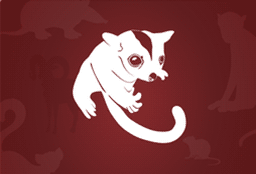The striped marsh frog or brown-striped frog is a common species in urban habitats It is a mostly aquatic frog native to coastal Eastern Australia.
A pale to grey-brown back with darker brown stripes. Usually also a pale stripe running down the middle of its back. Its belly is white and often flecked with brown, and there are dark spots and stripes on its limbs.
Size
4.5 - 7.5 cm
Grey soft fur, with a white belly and a black stripe that runs from its nose, over its head and along its back. It has a long bushy tail, the last quarter of which is black, often with a white tip. Its ears are large and hairless, and its large eyes are black.
Size
About 28 cm long (from nose to tip of tail).
It was first described by renowned botanist J.E. Smith, the founder of London’s Linneaen Society.
Evergreen shrub with smooth, purplish brown or light green bark. Up to 0.3 – 3 m high.
Leaves
Narrow, straight or very slightly elliptic, and blue-green. Each leaf is about 5 – 15 cm long and 2 – 10 mm wide, with a prominent vein down the centre. Its surface is hairless and covered with a fine white powder. It grows at right angles to the stem.
Flowers
Pale yellow to white and ball-shaped. Each flower is 4 – 7 mm in diameter and is found in clusters of 5 – 10 flowers aligned along an axis of 1 – 3 cm long. They are sweet smelling and enclosed in overlapping bracts (modified leaves) before opening.
Mostly bright green, with a blue crown, cheeks and colouring on its wings. It has red around its bill, throat and forehead, and bright red patches under each wing. The red on its throat is edged with yellow and its long, pointed tail is purple-red. The female is slightly duller, with a creamy bar under its wings.
Size
About 25 cm; ; Wingspan 32 – 36 cm
Metallic blue-black on top and light to dark grey on its breast and belly. Its forehead, throat and upper breast are rust in colour. It has grey legs and feet, and its eyes and bill are black. A young Welcome Swallow has shorter tail feathers than an adult and its forehead and throat are a creamy beige (instead of rust).
Distinctive feature
A deeply forked tail with a white band or row of spots on the long tail feathers.
Also known as Cape Lilac. It reaches maturity when it is 6 – 10 years old and lives for about 20 years.
Deciduous tree, usually 10 – 15 m high but can reach 45 m in its natural environment. Its canopy is 6 – 8 m wide.
Leaves
Bright glossy green and oval in shape, 2 – 7 cm long and 1 – 3 cm wide. They are arranged either side of a 12 – 45 cm long stem and turn yellow in late autumn before falling from the tree in winter.
Flowers
Pale purple to white, star-shaped, forming clusters that are 10 – 20 cm long. Each individual flower is about 2 cm in diameter and consists of 5 petals. The flowers have a chocolate scent!
One of Australia's most widespread birds on mainland.Mostly black with a white belly and eyebrow. A young bird has paler, slightly rusty edges to its wing feathers.
Size
18 - 22 cm long (from head to tail)




